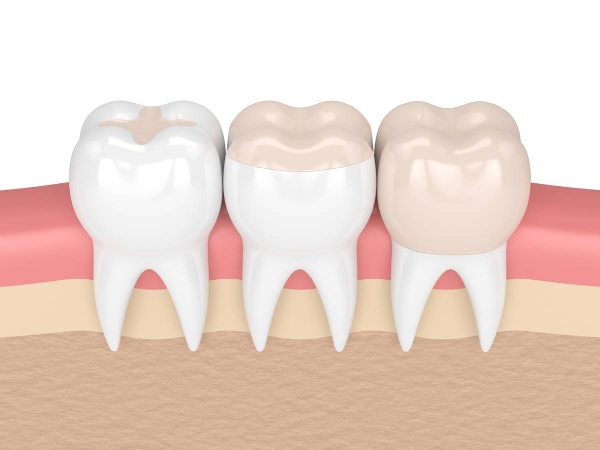
In cosmetic and restorative dentistry realms, a thin technical line separates the two. Cosmetic dental solutions are done to rectify aesthetic dental problems, while restorative dentistry is done to correct both aesthetics and tooth deformities. However, some dental solutions (such as composite dental filling) can be classified as both restorative and cosmetic procedures.
Composite filling and dental bonding have similar procedures, and it is difficult to contrast between the two. This guide will discuss the procedures for dental filling and bonding, the distinctive differences that set them apart, and some of the problems each procedure address.
Composite Dental Filling
A decaying tooth is one of the most painful dental problems you can experience. Infections cause nerve inflammation, which brings the patient excruciating pain and gum swelling. Infected teeth are the major cause of bad breathe, and if unattended, they can lead to tooth loss. Traditionally, dental cavities were filled with silver amalgams that caused development of other medical complication after some time.
Composite dental fillings, on the other hand, are made from finely ground inert plastic and glass materials.
Procedure for Composite Dental Filling
Repairing a decayed tooth requires professional attention from a dentist. Your cosmetic dentist Rochester hills will administer anesthesia to numb your gums before starting to prepare your tooth for the dental filling procedure. The infected tooth parts will be removed, and the remaining part thoroughly cleaned and disinfected. The dentist will disconnect the nerves from the roots of the infected tooth to reduce sensitivity and toothache after it is repaired.
The composite filling material is usually administered as a paste, which is easy to spread over the affected area. The dentist will mold the wet paste to look like a tooth, then let it dry. The paste is further cured using a special LED light in order for the composite filler to bond with the remaining tooth part. The already filled tooth is then cleaned and polished to attain a glossy-white finish.
Regular dental checkups are necessary to evaluate the health progress of your repaired tooth. Dental composite filling is also used to correct chipped and cracked teeth, as well as restoring the natural white color of your teeth.
Cosmetic Dental Bonding
Cosmetic dental bonding is one of the fastest dental cosmetic procedures if one wants immediate results. Contrary to composite dental filling, dental bonding does not require tooth reduction or re-shaping. Dental bonding procedure only involves tooth surface rectification.
Procedure for Cosmetic Dental Bonding
Your dentist will identify the affected tooth and preps it. Preparing a tooth for dental bonding is done by cleaning and disinfecting the affected area. Dental bonding uses composite resin that only alters the tooth’s color by adding a thin layer on the crown.
Once the paste solidifies, the dentist will shine a special light on the tooth to allow proper bonding and color formation. A dental bonding procedure is recommended when you want to improve your teeth color, repair slightly chipped teeth, or completely changing your natural teeth color for a more glossy finish.
A dental bonding procedure is preferred by many because it is non-invasive, offering quick solutions for minor dental problems with minimal risk of tooth sensitivity.
The Differences between Composite Dental Filling and Dental Bonding
Apart from procedural variations, dental bonding and composite filling differ in other various ways;
- Material Strength
Dental bonding resin material is not as strong as an amalgamation of glass and plastic. Your dentist will advise against biting hard surfaces and objects like pens and metal, as the resistance can cause the bonding resin to break off together with your tooth.
- Durability
Composite filling materials last longer and can withstand more force than dental bonding resins. Amalgam fillers are more resistant to abrasion. Therefore, composite fillers will serve you for a longer period than bonding resins.
Conclusion
Composite filling and dental bonding procedures offer good solutions for specific dental problems. Taking care of your newly corrected teeth goes a long way in ensuring that you do not need additional dental procedures. More innovative materials with less health complications are developed as time goes by. Depending on the aesthetic dental flaw you are looking to correct, both composite filling and dental bonding procedures are good options.






